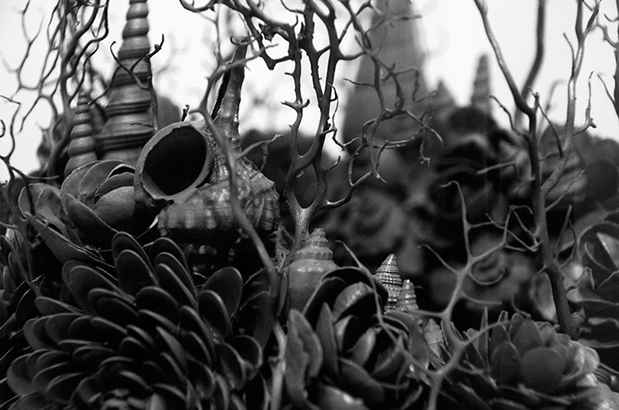Lauren Fensterstock “The Order of Things”
Claire Oliver

This event has ended.
Every planned landscape reveals the particular philosophy of its maker; one could say it leaves an allegorical map of the world’s structure at the time of its creation. For example, as early as the 18th century, European gardeners created purposefully ruinous landscapes to suggest a continuum of change in a world where man had only a temporary impact. This lies in stark contrast with 16th century Baroque gardens, such as Versailles, in which nature was forcibly tamed to man’s exacting rule. In Lauren Fensterstock’s current exhibition with Claire Oliver Gallery, we see works drawing from the history of Man’s varied and often contradictory relationship with the natural world.
With a similar faculty as Robert Smithson’s Spiral Jetty, seen as a personal dialogue between an individual and nature, Fensterstock reminds us we must take heed of the global forces impacting our environment. The Order of Things is not a map that paints the world as a whole, but one that seeks discovery in glints and crumbles; in contrast to Smithson, Fensterstock’s work intentionally avoids grand narratives in favor of the fractious, the illogical, and the contradictory. The Order of Things uses theatrical means to create a hybrid natural/unnatural space using the continued potency of nature as a cultural metaphor.
In the exhibition’s title work, a mixed media triptych brings together two ideas of hermetic space: the cave and the collection. Paleolithic cave spaces cypher the origins of human consciousness, yet they seduce with their inability to be truly understood. In contrast, the collection can be seen as the manifestation of our desire to create method and structure. A precedent for The Order of Things can be found in the elaborate shell grottos of 18th century England. These amazing constructions brought together the collection, the decorative arts, and a new found interest in natural science brought forth in the form of an artificial cave. In contrast, the blackness and rigid geometry of the shelves Fensterstock houses her grotto in are reminiscent of the rhythms of Louise Nevelson. The universal aims of these two artists makes a striking contrast with the culturally specific genome of the ‘collection’. The modernist finality of Malevich is present throughout the exhibition in works such as Midden and Claude Glass Cube. Each of these works suggest contradictory beliefs in the structure of the world and the notion of time.
Media
Schedule
from April 14, 2016 to May 21, 2016